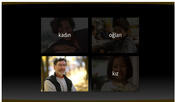Berlitz, Rosetta Stone, Auralog, Fluenz, and iTunes are offering a new wave of online courses and PC-based apps to help you parlez Francais, and more.

During your travels in the not-too-distant future, you may need a translator just to find the Web site for the local cab service, restaurant, or tourist attraction -- even if you're standing right in front of the billboard. If you're a job seeker trying to increase your marketability, you may consider differentiating yourself by learning a "less-commonly-taught language" used by a small-but-vibrant economy, or a difficult language to show off how smart you are.
| |
| |
Goodbye, small world. With the English language vulnerable to a long-term decline along with the U.S. dollar, the value of your home and your 401(k), there has never been a better time to think about learning a foreign language. And with broadband Internet, rich-media technology, and Web 2.0 design, the language-learning process itself has never been easier -- or more fun!
OK, I'll Do It. Where Do I Start?
If you were to join a gym for the first time in years after a long period of sedentary behavior, would you invent a random circuit from one machine to another, or would you hire a personal trainer? Unless you know what you're doing, get help.
The same holds true for learning a language. You can find all manner of free Web sites devoted to teaching you one aspect of language learning or another. But if you're new or just rusty, you'd be best-served with professional guidance to start you off with a solid routine, lest you end up with the linguistic equivalent of huge biceps and a flabby gut.
Berlitz
If you're a motivated learner with commitments that prevent you from attending live classes, try an online course. The venerable Berlitz offers its Virtual Classroom that mirrors its classroom approach with scheduled one-on-one lessons in French, German, Italian, Spanish, or other languages by arrangement ($2,800 tuition, $425 materials plus S&H); or in groups of 2-4 to choose from any of the preceding languages, Russian, Portuguese, Mandarin Chinese, or Japanese ($1,199 tuition, $250 materials plus S&H). Classes meet twice weekly for 10 weeks. Or, a five-session "Berlitz Ticket To…" starter course in French and Italian can give you the basics ($175, downloadable materials). All classes are held real-time.
| |
| |
Rosetta Stone
The other big name in language learning, particularly if you visit malls and airports, is Rosetta Stone. The winning appeal of Rosetta Stone's CD-ROM software stems from its smooth interface and integration of images with words. The approach, labeled "dynamic immersion," conveys the meaning of new vocabulary using photography with native language voice-over, without translations. Watch the demo to get a sense of how it works -- and to learn a few words in Turkish. The software also includes audio recording and speech recognition capabilities. You can buy the CD-ROMs (from $209 for Level 1 to $499 for the Levels 1-3 bundle) or purchase a subscription to Rosetta Stone Online ($109.95 for 3 months, $159.95 for 6 months, $259.95 for 1 year) for the same experience through your browser.
Auralog
Auralog also straddles the divide between CD-ROM software and the online experience with its Tell Me More software. The program (see demo) takes over your entire screen, helping you to avoid distractions and get into the flow of the program. Each spoken prompt is followed by three choices, and you answer using a microphone. That's when the voice recognition kicks in, and your virtual conversation partner comes back with an appropriate response. These "dialogues" are followed by various guided activities, including the ability to practice your pronunciation using visual representations of the sound waves. It's mildly addictive -- and beneficial for your accent -- to try to max out your score at imitating a spoken utterance. Prices for CD-ROMs start at $235; the online service costs $9.95/day, $24.95/week, $49.95/month, $175/six months, and $295/year. Requires a PC with Internet Explorer.
| |
| |
Fluenz
Currently for Spanish, French, and Chinese only, Fluenz offers DVD-ROM software for either Mac or PC, plus a CD-ROM included for headset listening on the go. Following a classroom-style, instructor-led approach, the program provides an introductory discussion in English; subtitled dialogues between the exemplary student and the teacher; reading, writing, and listening drills; and the ability for you to record yourself speaking one side of the dialogue or the other. ($218 for Level 1 Spanish/French; $248 for Level 2 Spanish/French; and $338 for the Mandarin bundle, add $100 for Mandarin on Windows Mobile, version 2 coming soon).
If the prices of the commercial offerings give you pause, you can find plenty of other online choices if you're willing to do some looking around. A good place to start is LangSource, run by the National Foreign Language Center (NFLC). Using the "Language Resource Search," pick from among 12 difficult languages and search for Electronic Sources to find free sites for learning Korean, Chinese, Tamil, and more. And if you become fluent (with a security clearance) in any of these, you can work as a contract linguist for the United States government through the NFLC.
Listen And Learn
If you're trying to learn a language while commuting or working out, the audio-only approach beats trying to operate a Web page while dodging traffic or riding the exercise bike. If you've figured out how to purchase songs from the iTunes Store or rip a CD onto your MP3 player, you can have an entire catalog of audio-only language-learning materials at your disposal. Also, with about 100 free language-learning podcasts available through iTunes, you can pick up anything from a phrase-of-the-day to the lesson-of-the-week across several languages. And it works! Last fall, I started listening to Coffee Break Spanish -- currently the #1 language podcast on iTunes, and it served me well during a trip to Barcelona in January. Generally, as with Coffee Break Spanish, the podcasts are free but the transcripts are available by subscription.
Another noteworthy source of audio content is Audible, which carries the Pimsleurcourses. Known for immersing learners in conversation without explicit grammar or drills, the Pimsleur approach has you listen to a single 30-minute lesson each and every day. If you stick with it, you can barrel through 90 lessons of Spanish in three months. Normally, it costs $274 for 30 lessons, but on Audible, you can buy five lessons at a time -- $29.16 for the intro, and $40.79 for subsequent lessons -- for a total of $233.11 for the first 30 lessons. Or, you can buy the AudibleListener Platinum plan to receive 24 credits all at once for $229.50, and then use 18 for a full set of 30 lessons, with credits left over for six additional audiobooks from the rest of the catalog.
If your idea of a language lesson involves sitting back and letting the sound wash over you, make it a point to try the earworms "Musical Brain Trainer" Rapid Languages series. The idea is deceptively simple. Like it or not, you probably know the lyrics to every stupid song you've ever heard. Why not, then, enlist the mental processes involved with committing words like "umbrella" to memory into the service of learning a foreign language? Each offering in the Earworms series includes numerous exchanges between an English speaker and a foreign-language speaker set against a background of varying New Age-style musical tracks with hypnotic, repetitive rhythms ($16.95 on Apple Store, also available on Audible, and coming soon to a retailer near you).
Say Something, Anything
After you've learned the basics, you're going to want to build your vocabulary, as well as talk or write to native speakers. Various Web 2.0-style sites have positioned themselves around these needs. Most combine some degree of flash card-style vocabulary drilling exercises with the ability to connect with a language partner that fits your learning profile. However, it's difficult to get both sides right.
| |
| |
Babbel has the edge on visual appeal, with user-contributed and user-rated photographs illustrating sets of related vocabulary. A series of matching exercises, plus audio, puts the words under your tongue, and then a "spaced repetition system" (SRS) ensures that you see each word again just at the point where you're about to forget it. If you're at the stage in your language learning where you need to build a working vocabulary, this approach can be helpful and enjoyable. I use an SRS for my studies in Japanese, using Reviewing the Kanji, a donation-supported Web site that tracks individual progress through the popular Remembering the Kanji method. (A Chinese version of the book is forthcoming.)
On LiveMocha, your red pencil forms the user-generated content. You can post your attempts at a foreign language and allow other visitors to correct your spelling and grammar -- or return the favor for ESL students. It's also an active social network with friend requests, live IM chat, and messaging. Other language-based social networking sites include Lang-8, xLingo; and Facebook, where there are applications for learning Spanish, and Japanese (registration required) and more.
Entirely skipping the flash card drills, SharedTalk is Rosetta Stone's language exchange network. SharedTalk has a well-designed Ajax-style interface for finding a language partner, plus voice chat and text chat. Content also is monitored for inappropriate usage, which makes it more suitable for the younger set (13+).
Find Your Language In The Wild
Once you've got a handle on your chosen language, the Web allows you to immerse yourself as never before. Whether you're looking at local-language newspapers, learning about foreign culture from YouTube clips (e.g., how to use chopsticks) or listening to foreign-language radio stations, there are countless ways to put your new knowledge to use.
And here's one of the best ways -- find or start a Meetup group near you to spend face time with other people who speak your language.
About the Author(s)
You May Also Like












